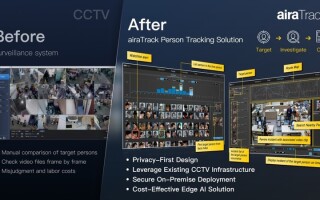Bring the Future to the Present with Outdoor Display Walls
January 08, 2016
Blog

LCD walls are becoming popular as a futuristic solution in both system design and construction.
Take for example, The Cosmopolitan Hotel in Las Vegas, where the visual experience is transformed and elevated, with the lobby covered mostly with immersive displays broadcasting high-definition video contents. It becomes immediately apparent that this hotel is different from the competition.

While display walls can be an excellent investment for indoor advertising, from retailers to theaters, hotels to casinos, outdoor advertising is a target as well. Taking an indoor display wall outside is as easy as designing the system with an LED-backlit LCD sunlight readable display. Such a display uses LED backlighting instead of the cold cathode fluorescent (CCFL) backlighting. Traditional LCDs use CCFLs as their backlight. While cheap, they’re not as energy efficient as LEDs. Two common LED-backlighting technologies are:
- Edge-lit LEDs, where the LEDs are formed around the rim of the screen, using a special diffusion panel to spread the light evenly behind the display. For display walls, this technology is rare due to the slim bezel design on the edge.
- Full-array LEDs, where the LEDs are formed on the entire back of the LCD panel, lighting it up from behind.
The two images below show how the two LED backlighting technologies are achieved. LED-backlit, LCD sunlight-readable displays are customizable and user-friendly, particularly to field engineers, system designers, and installers, including those who may be remotely setting up the displays.


Most retailers choose LCD walls to improve advertising returns and increase sales. Visual experience plays a crucial role in advertising. The Litemax display wall solution comes with color enhancement technologies to optimize the visual experience. For example, the MaxRGB color-saturation technology brings NTSC to 97%. To put that into perspective, the NTSC on a laptop is about 72%. See the comparison in the figure below.

Another visual experience optimization is local versus global dimming, as shown below.

Local dimming is dynamic, in which the LEDs are controlled individually (or in clusters) to program the level of light or color intensity in a given part of the display. However, the cost can increase dramatically. When placed outdoors, brightness level should be accounted for when designing an effective, visually attractive wall display. For most wall displays, the level stays between 700 and 1000 nits.
One challenge when using a super-large, super-fine display wall installation is achieving absolute image clarity at a close distance. Placing one computer behind each screen and programing them to display content in a synchronized fashion is currently the most optimal solution. In this scenario, designers will employ simple media players outputting a portion of a large video in a synchronized fashion. Unfortunately, this eliminates interactive functionality as all video content must be produced in advance and can’t be modified during playback, making real-time, live announcements impossible.
A new distributed graphics architecture is becoming popular. Introduced by IAdea, the AnyTiles architecture addresses the need to drive super-fine, super-large display walls. AnyTiles uses common computing parts found inmost mobile devices. By adding specialized software into the mix, AnyTiles can transform almost any device into a large, coordinated wall display that scales nicely and natively supports integration with Windows-based software.

A co-founder of Litemax Electronics, David King has served as President and Head of the Display Business Unit since the company’s inception in 2000. King is responsible for the oversight for all operations across Litemax, as well as new business opportunities. He is also a member of Litemax’s Board of Directors.





